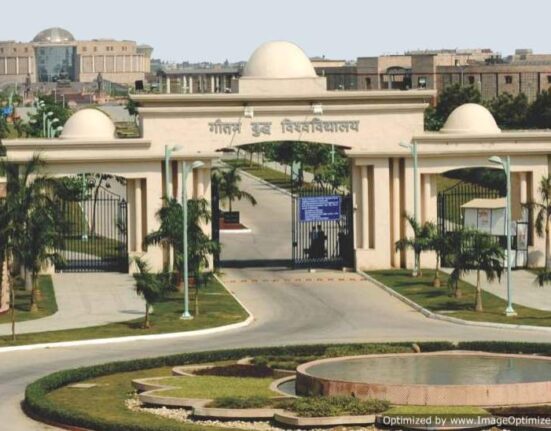Procedure for filing a writ petition -Aryaman Shivendra Pratap
What is a writ petition?
The term writ petition is derived from the English legal system meaning an order issued by a higher court to the lower court directing them to do something or stop them from doing an activity. The direction is said to be specified, against the order of the lower court. A writ is in the form of a written command in the name of the court, directing a person to act in a particular way.
In the Indian legal system, one can file a writ petition in the Supreme Court and High court under Article 32 and 226 respectively. Articles 32 and 226 further broadens the meaning and process of the writ petition. A person can also file a criminal or civil writ petition in the Supreme Court or the High Court, depending upon the seriousness of the case. If the judgment of the High Court seems to be unjust or unsuitable then the person concerned can approach the Supreme Court for the same.
Types of writ Petition
Habeas Corpus– A writ of habeas Corpus is filed when a person is detained illegally or without any cause. This writ can be filed by the arrested person’s family or friends etc. And if the court finds out that the person is arrested without any cause then, then it can order for the release of that person.
The ambit of this writ has been widened by the Supreme Court in the case of P.S.Sadashiv Swami v. State of Tamil Nadu[1] and this writ was said to include the violation of fundamental rights of prisoners as well with regard to the Sunil Batra v. Delhi Administration case. The court had added that now this writ also gives-
- The court has the power and the authority to ask questions as to why a particular person has been detained.
- Summoning of the detained person in front of the court.
- And if it has been ascertained that the person so detained had been done so illegally, then the court can ask that person to be released.
However, these are not the only circumstances where this writ can be issued, this writ can also be issued in these circumstances-
- Mala fide intention in detaining the person, so as to injure or harm such person.
- Person so detained has not been brought in front of a magistrate within 24 hours of such detention.
- Arrest is against the Indian constitution
- Arrest has been done when there was no violation of any law.
Person who can file:
Illegal detainees usually file this writ however, the court may allow any other person to file on behalf of such detainee, such as the friend or relative. This writ can be against any individual or public authority.
Mandamus– mandamus is a Latin term which is known as “we command”. It is a court writ wherein the higher court orders the lower court, tribunal, forum or any other type of public authority to perform a particular act which falls in the area of their expertise.
In the case of Mani Shobhrej Jain v. State of Haryana[2], the court had said that there are few requirement of mandamus-
- Existence of a legal right
- The legal right should be enforceable by court
- With such enforcement, a duty or responsibility must be imposed on a public authority, person, govt etc.
- The duty is of public nature.
This writ can be issued against the following-
- A private body or an individual
- Enforcement of a private contract etc.
Prohibition– This writ is issued by the higher court to prohibit some activity. This is commonly used to put a stop to the proceedings if the authority is overstepping their powers. After this writ is issued by the High court or the Supreme Court, the proceedings of the lower court automatically comes to an end.
The conditions for granting the writ of prohibition was given in the case of Govind Menon v. Union of India[3]. These conditions are as follows:
- Excess of jurisdiction
- Absence of jurisdiction.
The difference between Mandamus and Prohibition:
Mandamus is issued by the higher court, directing the lower authorities to do an act which they are obligated to do. This writ is issued not only to the judicial bodies, but also to the administrative and quasi-judicial bodies.
Prohibition on the other hand directs the lower authority to not do something which is out of their ambit. This writ is only issued against the judicial and quasi-judicial bodies.
Certiorari- this writ means “to be certified”. This writ is issued when the person desires that their matter should be transferred to a higher ranking authority so that the matter is dealt with appropriately. This writ can be issued against any lower body or tribunal.
This writ can be issued against the lower court or the tribunal when there is-
- Excess of jurisdiction
- Absence of jurisdiction
- Failure to make use of the jurisdiction
The court, in the case of State of U.P v. Mohammed Noor, said that this writ can be used when there are issues of jurisdiction.
The conditions for issue of this writ are as follows:
- The court or the tribunal in front of which the case was originally being dealt should have the authority to deal with such case.
- Such lower court or tribunal did not have the jurisdiction and still passed the order.
- There are errors apparent on the face of the order such as violation of Principles of natural justice.
Quo Warranto- This writ means “by what authority” or “on whose authority one is holding a public office”. This type of writ gives the right to restrain a person from acting in the capacity of public office to which he/she does not have the entitlement.
The court, in the case of University of Mysore v. Govind Rao had laid down certain conditions with respect to this writ:
- The position which is being held without authority needs to be a public position
- The person holding such a position is doing so illegally.
- The position should be of importance and not merely functional in nature.
Procedure for filing writ Petition in High court:
- Procedure for filing writ of Habeas Corpus:
- Application for habeas corpus writ should be filed either in the Supreme Court or the high court.
- Other documents:
- Affidavit
- Nature of detention
- Grounds of detention
- Circumstances of arrest
- These should be disclosed to the best of a person’s knowledge.
- After receiving the application, the court will satisfy itself whether or not there is a prima facie case being meted out for allowing such application.
- If the court allows the application, it will issue a rule nisi or a show cause notice to the opposite party.
- After receiving such show cause notice, the opposite party will present their side of the case on a selected date,
- After hearing both the sides, the court will look into the merits of the case and pass a suitable order.
- If the court is of the opinion that detention is illegal, it will order the release of such a person.
- If the court is satisfied that the detention was necessary, then the rule nisi or the show cause notice will be discharged.
- Procedure for filing the remaining 4 writ petitions: For filing writ petition to High court, the same can be done by applying for the writ petition under Article 226 of the constitution of India.
- Application: It should contain the facts, question of law and any other document the applicant is using, notice motion and prayer.
- An affidavit to the same effect needs to be attached with the application
- These petitions are filed at the filing counter of the High courts.
- Once the application is admitted, the notice of hearing is sent to the other party and this notice will be based upon the notice motion in the application.
- If the petition has been admitted it does not mean that prayer will be granted.
- The court can dismiss the petition at any time.
- Court fee needs to be paid
Procedure for filing writ petition in Supreme Court:
This can be done under article 32 of the constitution of India, for the enforcement of the fundamental rights. However, before going for writ under the Supreme Court, it needs to be seen that the matter should be related to more than one state or would have an impact on more than one state of the country.
- General procedure for filing writ in Supreme Court:
- Person can apply under article 32 of the constitution.
- If any substantial question of law is involved, then a bench of 5 or more judges will hear the same.
- If there is no substantial question of law, then less than 5 judges will suffice.
- There is no fee for writ of habeas corpus.
- Procedure for filing a writ petition of Habeas corpus:
- Writ petition: the petition needs to be made by the person who has been detained, stating the circumstances due to which he has been detained, any document they have relied on and the prayer.
- Affidavit: an affidavit to the same effect needs to be attached with the petition.
- Inability: if the detained person is unable to make the affidavit himself, then his relatives and friend can do the same for him, by stating reasons as to why he could not make the affidavit himself.
- It has to be stated in the petition whether the person had first approached the high court and if so, what their decision was.
- The detained person is brought before the court if the petition is accepted, owing to the existence of prima facie case.
- Notice is sent to the opposite party to explain why the person was detained illegally and why he shouldn’t be released.
- If the opposite party is not able to give a cause, the detained person shall be released by the court.
- Procedure for remaining 4 writs in Supreme Court:
- Application: name, details of the petitioner, nature of the fundamental rights which have been infringed, relief and grounds for seeking relief.
- Affidavit to that effect.
- Three copies of application to be filed in the registry.
- It shall be stated in the application whether or not this application was made to the concerned high court before coming to the Supreme Court. If yes, what the decision was.
- If the court is satisfied that there is a prima facie case for admitting the application, then the court will issue an order to notify the other party.
- If no prima facie case, then the court will dismiss the petition.
- After the notice is sent to the opposite party, he should file his reply within 30 days from receiving such notice.
- If the court has accepted the application, it can grant ad- interim relief to the applicant.
[1] (AIR 1974 SC 2271)
[2] (1977 (1) SCC 486)
[3] AIR 1967 SC 1893







Leave feedback about this